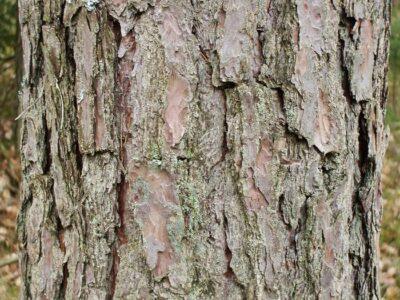Many of us eat quite a few leaves and roots almost daily, and occasionally some tender shoots too, such as asparagus and bamboo shoots – but imagine eating bark!
That’s best left to some borer insects, you might think. Maybe not. Consider the fact that there’s an American Indian tribe known as “Adirondack,” which literally means bark eaters in the native language of the Iroquois. And if you have been enjoying apple pies and rolls spiked with cinnamon, you’re no stranger to eating bark. The spice cinnamon is nothing but the dried bark of the Cinnamomum sp. tree.
There are better candidates offering edible bark, though. Many a Pinus sylvestris tree (scots pine) growing in northern Europe was denuded to provide food for the Sami people. Whether it was a food reserved for starvation diets or a local delicacy at all times is open to debate. But there’s much evidence of ground birch bark being added to flour to stretch the rations during the winter following the First World War.
Why would you want to eat tree bark?
The Scandinavians have traditionally cooked a “bark bread” with a flour made out of the softer layers of pine bark in combination with rye. And why not? The soft inner bark is part of the cambium, which consists of the plant tissue that carries food and water to all the different parts of the tree. There’s no doubt that it packs quite a bit of nutritional value, if not great taste.
Ultra-Efficient Water Filter Fits In Your Pocket!
No harm in trying some healthy natural food, but you may need to spend some energy in getting to the edible portion of the bark. It should be worth the time and effort. If you are in a situation where your survival depends on it, and have quite a bit of time on your hands, you’d be grateful to have a few pine trees around.
Fortunately, pines are quite common in the temperate regions all across the northern hemisphere, and almost all types of pines have edible bark. You may find them the easiest trees to identify even in winter when other survival foods are scarce or absent. Pine needles do make a vitamin C-rich tea, but you need fuel and other equipment handy to make it. On the other hand, the bark is ready to eat as soon as you harvest it.
Pine cones of all types have edible pine nuts, too, but many of them are too small, and the cones remain tightly closed in wet and cold weather. They may need the warmth of a fire to open up and deliver the winged seeds. And getting the edible nuts from their shells is not as easy as buying a pack of pine nuts, either. By comparison, stripping the tree bark with a sturdy knife or using the sharp edge of a rock may be more rewarding. The soft bark may provide quite a few calories when chewed up raw.
How do you eat the bark?
Stripping the hard outer portion of the bark is not easy work. This tough dead tissue protects the live cambium within. Once you get to this layer with whatever tool you have, scrape off the soft part. The layer clinging to the tough inner wood is the softest and juiciest as it has the phloem, the food-carrying tissue. Take care to take only narrow vertical portions of bark from the trees. Removing a ring of bark can kill the mightiest of trees, as it cuts off the food and water transport between the roots and the rest of the tree.
Story continues below the video:
Now that you have access to the treasure, let’s see how you can make the best of it.
1. Eat it raw
For a quick refreshing snack, the cambium tissue can be eaten raw. It would be some exercise for the jaws, and you’ll probably have to spit out the stringy remains after all the juices have been eked out. Eating raw bark may not provide you sufficient sustenance unless you have other food items to go with it.
2. Boil the bark
If you have a pot of water boiling over a fire, shred the soft bark into thin strips and add them in. It removes the pitch flavor to some extent, and, if you have used only the softest of tissues, your thin soup will be full of slightly more satisfying bits to skim off with a twig to pacify a rumbling tummy.
New Mini Pocket Power Plus Can Charge All Your Electronics — And Jump Start Your Car!
3. Make bark chips
Thin strips of the bark can be dry roasted to a light brown color for crunchy snack bites. They may be the nearest you can get to potato chips in some situations. They are said to taste one notch better when fried in a bit of oil or butter, but then you need to have it handy along with a frying pan.
4. Make some bark flour
Dry the bits of bark over the fire and pound it to a powder. If you’re fortunate enough to catch some wild game for roasting, the bark flour may add some extra nutrition to the meal.
All of us need survival skills in our kitty, because disaster often strikes unexpectedly. If you happen to come across freshly logged pine, it wouldn’t be a bad idea to practice your skills at peeling the outer bark and getting to the soft, light-colored inner bark. You can try chewing it raw; you may end up liking the slightly sweet taste in spite of the typical pine-pitch flavor.
Pine bark is not the only edible bark, but they are abundant and considered more or less safe. The bark of white birch can be eaten in the same way, or made into flour for making bread as the people in northern Europe did. These trees are easy to identify due to their characteristic bark color and design. The black birch, also called sweet birch, is another source of edible bark.
Slippery elm and spruce are other candidates, but you must learn to identify the trees correctly, as some contain deadly toxins. For example, all parts of yew trees – except the fleshy part of the fruit – are toxic, but the trees look very similar to spruce.
The next time you go camping near a wild spot, hone your skills at identifying trees and extracting edible bark.
Have you ever eaten tree bark? What advice would you give? Share your thoughts in the section below:
 Off The Grid News Better Ideas For Off The Grid Living
Off The Grid News Better Ideas For Off The Grid Living





